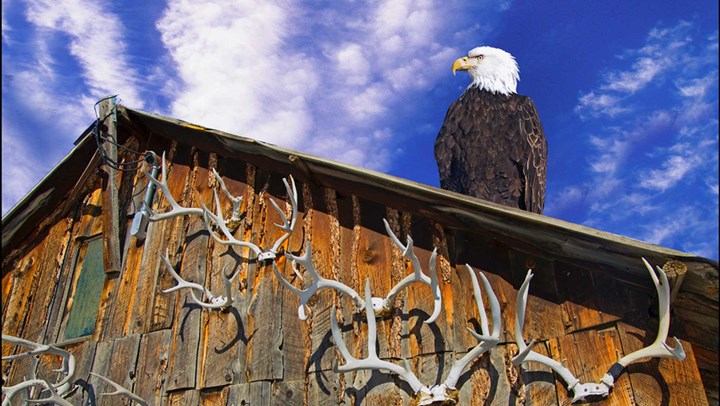
by Cody McLaughlin - Monday, September 23, 2024

America’s sportsmen and women remain the largest direct contributors to conservation in history. As announced earlier this year, the U.S. Fish and Wildlife Service apportioned an eye-popping $989.5 million in Pittman-Robertson funding to the fish and wildlife agencies in all 50 states and the five U.S. territories for Fiscal Year 2024. This underscores the vital role traditional outdoor enthusiasts play in America’s conservation efforts. These funds, generated through a self-imposed 11% excise tax on firearms, ammunition and archery equipment directed to a grant fund for state and insular wildlife agencies through the Federal Aid in Wildlife Restoration Act of 1937—commonly known as the Pittman-Robertson (P-R) Act for its two U.S. Senate sponsors—directly contribute to wildlife conservation, habitat management, hunter education and shooting range development. (Anglers joined hunters and shooters to also do their part through the Dingell-Johnson Sport Fish Restoration Act of 1950 that provided for an 11% tax on fishing tackle, boat gear and small-engine fuel.)
While this NRA website regularly covers hunters’ role in wildlife conservation, including their efforts to sustain species such as wild sheep, hunters’ positive impact on rural economies, and their ongoing voluntary financial contributions to conservation groups, it is the P-R Act that they contribute to that directly provides grant funding to the states and insular areas’ fish and wildlife agencies each year for their vital programs.
As for how the funding works, as prescribed by the P-R Act 87 years ago and explained by the USFWS, P-R funds are apportioned annually with 50% based on the ratio of the land area of the state, commonwealth or territory to the total U.S. land area. The remaining 50% is based on the number of paid hunting licenses holders in the state, commonwealth or territory compared to the total number of paid U.S. license holders. No entity may receive more than 5% or less than 0.5% of the total apportionment. Grants for hunter safety and education programs, however, are based on the population of the state, commonwealth or territory.
This apportionment process may seem complicated on its face, but it really just means that hunters’ dollars collected via excise taxes on guns, ammunition and archery equipment are sent to the federal government, which then sends the funds back to the states, allocated based on the number of licensed hunters in a given state and the land area of a state. The more of either that each state has, the greater the amount received through the P-R Act. States then are required to match P-R funds through their own resources, including hunting license fees or other sources.
The Top States for P-R Grant Funding
As each state receives this funding based on land area and the number of licensed hunters, Texas leads the nation with $45.7 million in funding for 2024, which is a testament to the state's historical commitment to wildlife management and outdoor recreation. Alaska, the largest state, comes in second when it comes to the amount of P-R funds received with over $41.9 million for 2024, highlighting its vast wilderness and its unique place of honor in hunting culture as a legendary destination for big game hunters, waterfowlers and outdoor adventurers. The five states that received the largest amount of funding include:
Smaller But Still Vital Contributions
Not every state is large or has a big hunting culture but even states that sometimes present a more historically challenging environment to outdoorsmen and women, such as Delaware and Rhode Island, still receive vital contributions, with each getting nearly $5.9 million in 2024. The bottom five states—Rhode Island, Delaware, Vermont, New Hampshire and Hawaii—in fact, all received $5,891,560, which, for example, accounts for nearly .1% of Delaware’s $6.1 billion annual budget.
The five U.S. territories also secured funding in the following amounts:
Spotlighting Where P-R Funding Goes
When it comes to the truth about who funds wildlife conservation in America, one of the major questions hunters rightly ask of anti-hunting extremist groups is: Where does extremists’ money go? As this NRA website tracks, the billions of dollars extremists funnel into the likes of the HSUS, PETA and other extremist groups campaigning to end all hunting could instead be a huge boon to wildlife in step with hunters’ P-R contributions, which are documented by the U.S. government as proof of where hunters’ dollars go.
In noting the wisdom of hunters and hunter-backed initiatives, the P-R Act stipulates that these funds be used specifically for wildlife conservation and management efforts in the United States, including habitat acquisition and restoration, wildlife research, wildlife management, hunter education (with $180.8 million allocated specifically for basic hunter education programs across states and an additional $8 million apportioned for enhanced hunter education) and public shooting ranges among other things.
This source of funding is the cornerstone, as are hunters, to the entire North American Model of Wildlife Conservation, and it’s worth continuing to go afield to see your hunter and angler license dollars going back to the states—and ultimately the wildlife—that we enjoy with our friends and family.
About the Author
Cody McLaughlin is an outdoor writer, conservationist and hunting advocate based in Alaska. He recently launched Trout Stream Studios Trout Stream Studios where he serves as an executive producer for podcasts and livestreams in the hunting and veterans’ affairs spaces. McLaughlin serves on the board of the Alaska Outdoor Council, the Last Frontier State’s NRA affiliate, and is a former board member and lead spokesman of the New Jersey Outdoor Alliance.
E-mail your comments/questions about this site to:
[email protected]
Proudly supported by The NRA Foundation and Friends of NRA fundraising.
